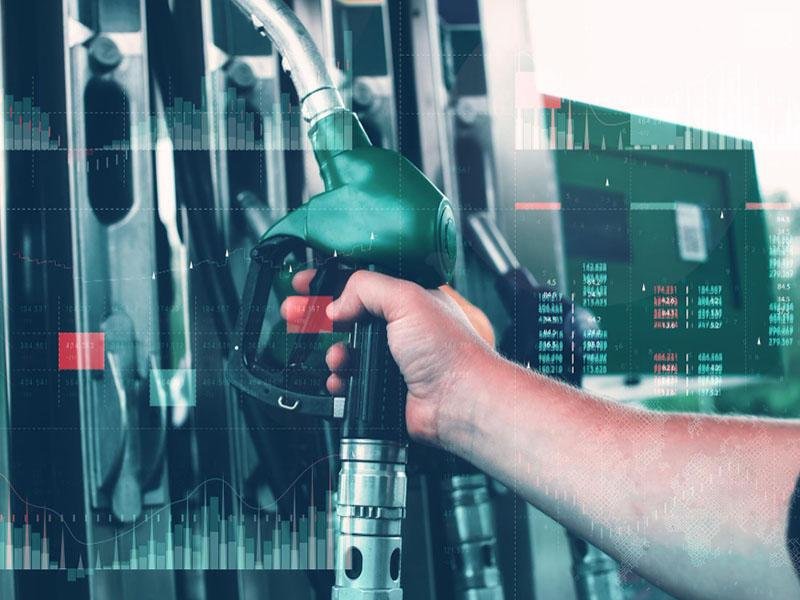The Ultimate Guide to Fuel-Efficient Fleet Operations in the UAE

With fuel prices in the UAE reaching record highs and sustainability becoming a key government priority, optimizing fuel efficiency has become mission-critical for fleet operators. Modern Fleet Management Software now offers powerful tools to combat rising costs while supporting the UAE's Net Zero 2050 strategic initiative.
This comprehensive guide reveals proven strategies used by top UAE fleets to reduce fuel consumption by 15-30% while maintaining operational efficiency. We'll explore cutting-edge technologies, driver training techniques, and maintenance practices specifically tailored for the Middle Eastern operating environment.
The Fuel Efficiency Challenge in UAE Conditions
Unique Regional Factors Impacting Fuel Use:
-
Extreme summer temperatures (regularly exceeding 45°C)
-
Long-distance hauls between emirates
-
Frequent idling in traffic and at job sites
-
Sand and dust affecting engine performance
Current Fuel Cost Realities:
-
Diesel prices increased 40% since 2021
-
Average truck consumes 35-50 liters per 100km
-
Fuel represents 30-40% of total operating costs
💡 *A Dubai-based fleet of 100 trucks spending AED 18M annually on fuel could save AED 2.7-5.4M with proper efficiency measures.*
5 Proven Fuel-Saving Technologies
1. Advanced Telematics Systems
-
Real-time MPG monitoring per vehicle
-
Idle time tracking and alerts
-
Engine load optimization
2. Predictive Aerodynamics
-
AI-powered trailer configuration suggestions
-
Dynamic roof fairing adjustments
-
Automated side skirt deployment
3. Smart Cruise Control
-
Terrain-anticipating speed adjustment
-
Platooning technology for convoy savings
-
Traffic flow synchronization
4. Tire Pressure Monitoring
-
Automated inflation systems
-
Temperature-compensated pressure
-
Real-time alerts for underinflation
5. Hybrid Conversion Kits
-
Start-stop systems for urban delivery
-
Regenerative braking
-
Auxiliary power units for climate control
The Human Factor: Driver Training for Maximum Efficiency
UAE-Specific Training Modules:
1. Climate-Adaptive Driving
-
Optimal AC usage techniques
-
Engine warm-up protocols for extreme heat
-
Sand driving best practices
2. Eco-Driving Certification
-
Smooth acceleration/deceleration
-
Gear selection strategies
-
Route planning awareness
3. Incentive Programs
-
Fuel-saving bonuses
-
Gamified performance dashboards
-
Monthly efficiency championships
💡 Abu Dhabi National Transport reported 12% fuel savings after implementing a comprehensive driver training program.
Maintenance Practices for Peak Efficiency
Critical UAE-Specific Maintenance Areas:
1. Engine Optimization
-
More frequent air filter changes (every 15,000km vs 30,000km)
-
Summer/winter oil grade adjustments
-
Turbocharger cleaning cycles
2. Cooling System Management
-
Radiator sand removal protocols
-
Coolant concentration testing
-
AC system efficiency checks
3. Fuel System Care
-
Bi-monthly fuel filter replacement
-
Injector cleaning schedules
-
Tank condensation prevention
Maintenance Tracking Tools:
-
Automated service reminders
-
Digital maintenance logs
-
AI-powered failure prediction
Fuel Management System Implementation Roadmap
Phase 1: Assessment (Weeks 1-2)
-
Fuel consumption baseline analysis
-
Vehicle suitability evaluation
-
Driver readiness assessment
Phase 2: Pilot (Weeks 3-8)
-
Install monitoring equipment on 10% of fleet
-
Train pilot group drivers
-
Measure initial results
Phase 3: Full Deployment (Months 3-6)
-
Fleet-wide system installation
-
Comprehensive driver training
-
Process integration
Phase 4: Optimization (Ongoing)
-
Continuous monitoring
-
Seasonal adjustments
-
Technology upgrades
Calculating Your Potential Savings
Fuel Efficiency ROI Calculator:
| Fleet Size | Current Fuel Cost | 15% Savings | 25% Savings |
|---|---|---|---|
| 50 vehicles | AED 9M | AED 1.35M | AED 2.25M |
| 100 vehicles | AED 18M | AED 2.7M | AED 4.5M |
| 200 vehicles | AED 36M | AED 5.4M | AED 9M |
Based on average UAE operating conditions
Future Trends in Fuel Efficiency
1. Alternative Fuels Adoption
-
Electric vehicle integration
-
Hydrogen fuel cell trials
-
Biofuel blending programs
2. Autonomous Efficiency
-
AI-optimized driving patterns
-
Vehicle-to-vehicle coordination
-
Dynamic platooning
3. Solar Augmentation
-
Trailer-mounted solar panels
-
Auxiliary system solar power
-
Parking lot charging stations
Getting Started with Fuel Efficiency
Immediate Action Items:
-
Conduct a free fleet assessment with Flotilla IoT
-
Implement basic idle-time monitoring
-
Launch a driver awareness campaign
Long-Term Strategy:
-
Develop a 3-year efficiency roadmap
-
Budget for technology investments
-
Align with UAE sustainability initiatives
Conclusion
In the UAE's competitive logistics landscape, fuel efficiency has transformed from a cost-saving measure to a strategic imperative. By combining advanced technologies, targeted training, and disciplined maintenance, fleets can significantly reduce expenses while contributing to national sustainability goals.
The most successful operators are those treating fuel efficiency as an ongoing journey rather than a one-time initiative. With the right systems and commitment, 15-30% fuel savings are not just possible - they're achievable within your next fiscal year.
Take the First Step Today:




